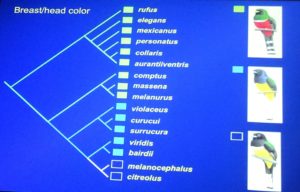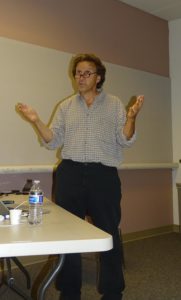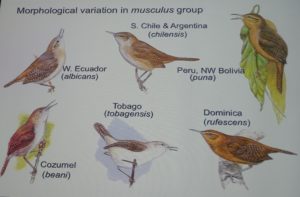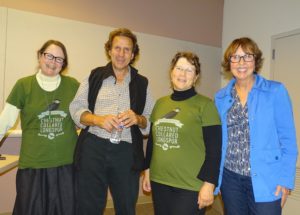JOHN KLICKA AT ABC! 9/22/16
ABC welcomed Burke Museum curator of birds and intense researcher, John Klicka, on September 22nd. The new director of Tahoma Audubon, Emily Kalnicky, was also introduced to the group by TAS president (and noted birder/bander) Jerry Broadus. We are happy she made her debut public appearance to the birders!
Professor Klicka is a dedicated researcher with very specific points of view on recent taxonomy work on birds due to his personal hands-on research. After Kay Pullen asked him to tell us about the changes going on at the Burke (all new facilities in new building!), he was eager to show us what he has been up to, studying genomes of House Wrens and other birds and discovering temporal, geographical, and geological connections, some of which was very surprising!
Before getting down to the specifics of the House Wren, Prof Klicka touched on how modern technology has discovered major diet changes (smaller prey) in the Marbled Murrelet that may be as important, or more so, than habitat loss. This was possible through the specimens collected over a hundred years ago looked at with new technology. Thus, specimens collected now by the museum may seem more important at some unforeseen time in the future, making growing and preserving museum collections their #1 purpose. #2 and #3 are the obvious purposes of education and research.
A discussion of genetic mutations followed with numerous examples, the most “colorful” of which was Trogon species color differences. Doing the molecular analysis shows that it is the head/breast hue and not the belly color that distinguishes different clades (descendants of the same ancestor). The other fascinating finding is that there is a molecular clock, which shows within 2% in millions of years when two descendants diverged.

Molecular research found that it was the head/breast color, not the belly, that was species-related.
That molecular clock leads directly to the profound theory of the Great American Interchange — the period of time when species from the north pioneered south and vice versa. It turns out that there is much correlation here with the point 3-1/2 million years ago when the Panama isthmus filled in. Even though birds can fly, they apparently still want to see the land below them when they move their households.
Troglodytes aedon might really be a bunch of different species spread throughout the Americas including some strange strains endemic to small islands off the north coast of South America. They are of temperate origin, but once pioneers cleared that isthmus, they radiated enthusiastically and now live in every corner of South America. Of the 75 Troglodytes species, 45 now inhabit the southern continent.
An even more extreme case is the true Tanagers, of which all 413 species crossed that Panamanian landbridge from the north and never looked back. One of the ah-hah moments was realizing that once they’ve tasted the tropics, they never want to leave. The reverse is rare.
Thanks, Professor Klicka for a peek into molecular taxonomy! We are discussing visiting your museum in 2017 and look forward to seeing you again.






Nice report Diane. Thanks.